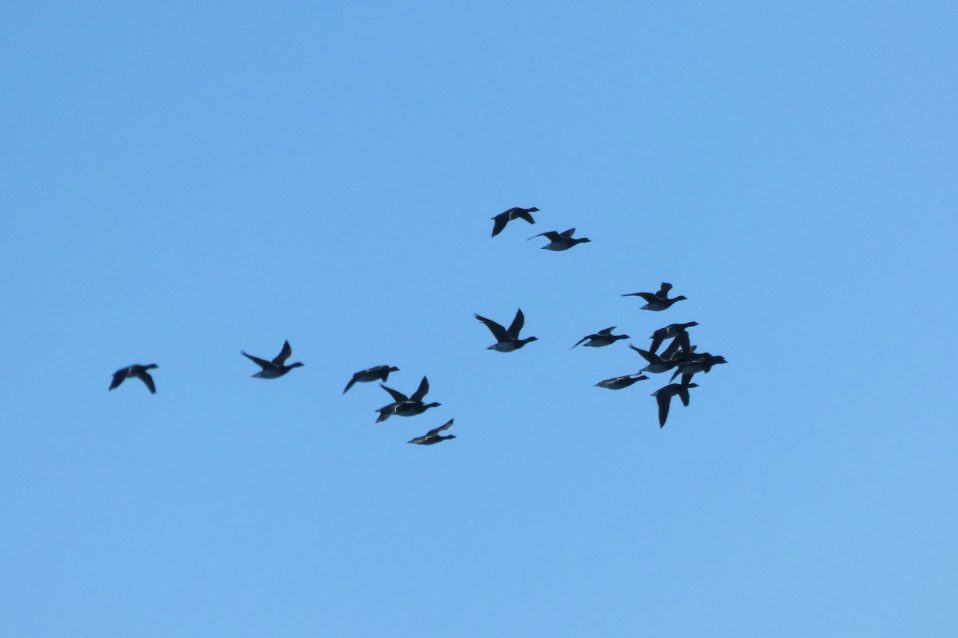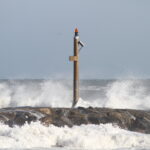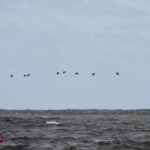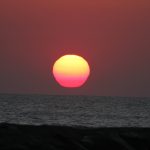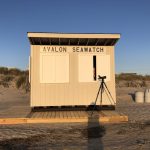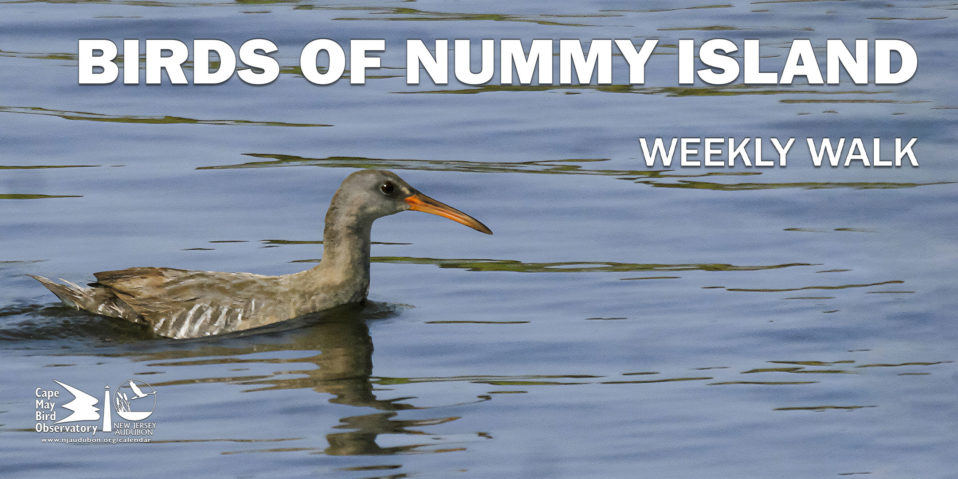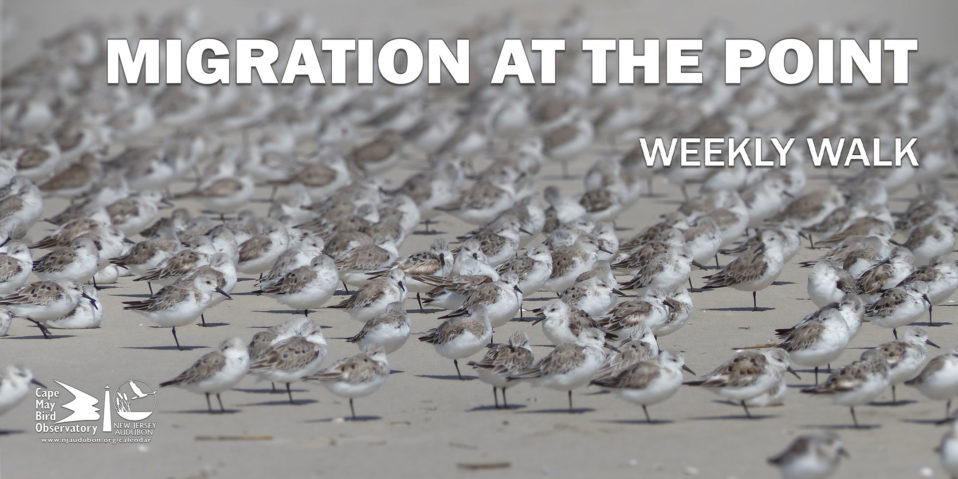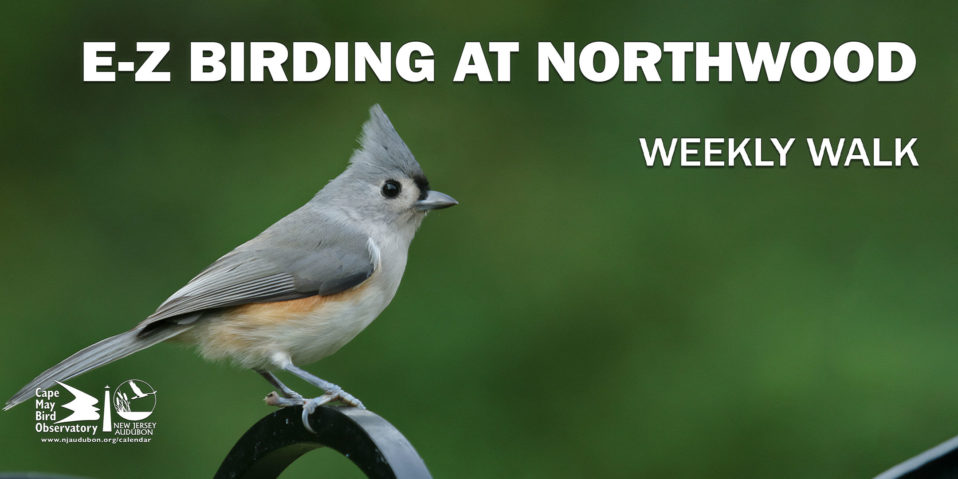A flock of Brant flying by the Seawatch. Brant are a species small goose that winter in bays and coastlines, and have a black head and neck with a pale chest.
Hello everyone!
Here’s an update for the Avalon Seawatch from October 7th to October 19th. It’s been so great to see so many people coming out and experiencing the Seawatch.
The first few days of this week saw the return of some early Common Eiders and the first Great Cormorant of the season on the 7th, along with 750 Black Scoters zipping through. The 7th and 8th were fantastic days for Brown Pelicans, when 99 and 121 moved through, respectively. The count on the 8th is the record high count for the Avalon Seawatch, it has been amazing to see so many fly through. As of the 19th, over 700 Brown Pelicans have been counted!
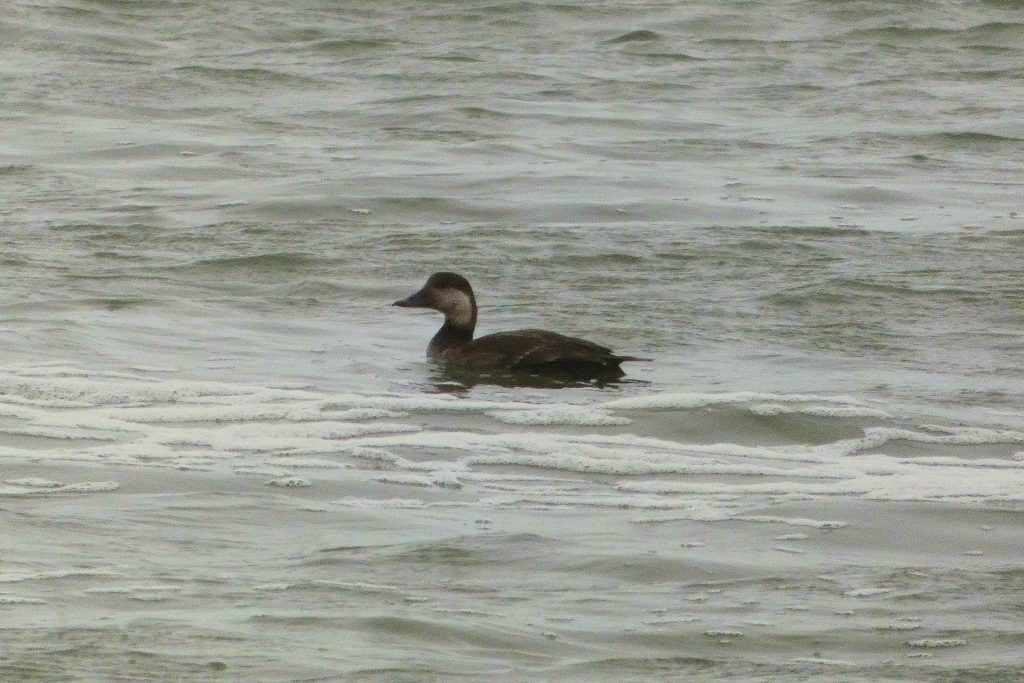
A female Black Scoter decided to sit out the storm in the tide pool that formed on the beach. Female Black Scoters are dark brown with a pale cheek, and Black Scoter have a rounder head and slimmer bill than that of a Surf Scoter.
The morning of Saturday the 9th brought the most Laughing Gulls and Double-Crested Cormorants in the season so far, with 3249 Laughing Gulls and 3639 Cormorants counted. However, the wind picked up offshore and the surf swelled, and most of the birds stopped flying. Over the next several days this rough surf and high wind provided little in terms of birds, except for a distant shearwater being seen on Sunday and a Manx Shearwater being identified by Tom Reed on Tuesday. Tom also had the first two Red-throated Loons for the season on Monday.
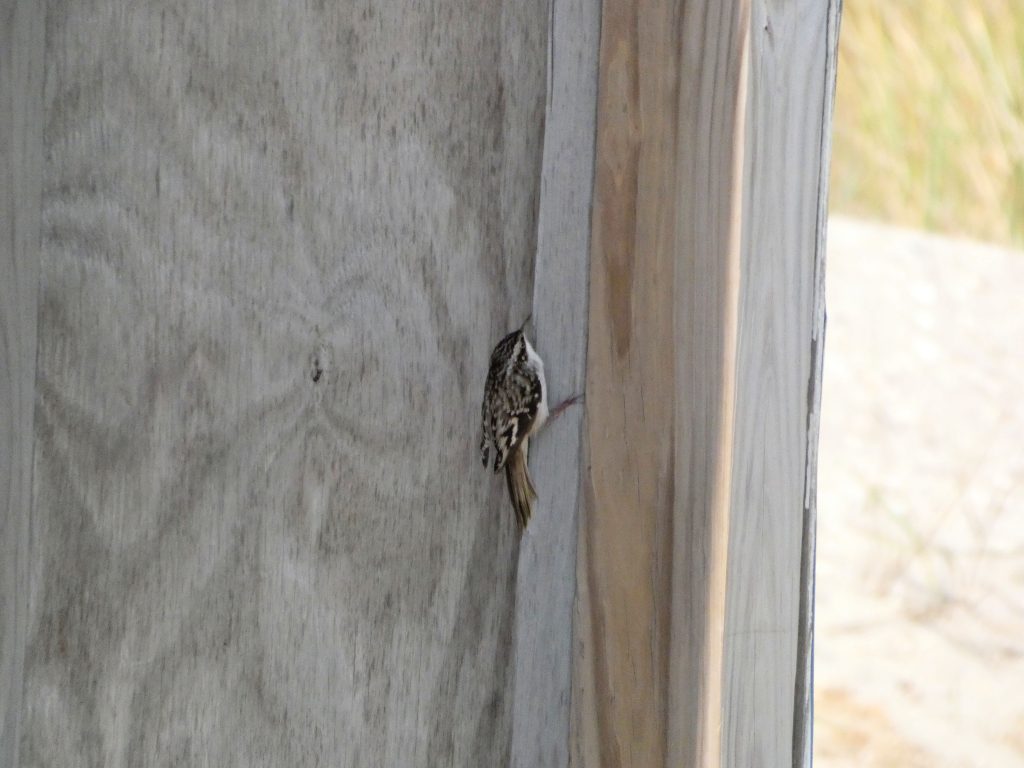
A Brown Creeper than came off the water and immediately started searching for food by shimmying up the side of the Seawatch Shack.
Strong Northwest winds starting on the night of the 13th provided a change of pace for the Seawatch, with plenty of passerines coming in off the ocean heading for the dunes. Many of the birds were exhausted from their flight over the water, and several were picked off by a local Merlin. One Yellow-rumped Warbler was so exhausted it fell into the water just at the edge of the sand, but luckily was scooped up by a very caring couple who dried it off and let it rest before it went on its way. Some of the passerines found include Golden-crowned Kinglet, Dark-eyed Junco, White-throated Sparrow, Song Sparrow, Eastern Meadowlark, Blue-headed Vireo, Brown Creeper, Eastern Phoebe, Horned Lark, American Pipit, Cape May Warbler, Black-throated Green and Blue Warblers, Northern Parula, a late Chestnut-sided Warbler, and even a Clay-colored Sparrow, found by Tom Reed. Tom also had both American Woodcock and Wilson’s Snipe come of the water, headed for the dunes.
Saturday the 16th brought a cold front with strong South winds, which in turn provided 13 Parasitic Jaegers, some of which luckily came close to shore and were chasing Laughing Gulls and Forster’s Terns around for their prize of freshly caught fish right off the jetty. It was made even better that there was a large group of visitors that were able to witness the Jaegers in action. The South wind also brought the first Black-legged Kittiwake of the season.
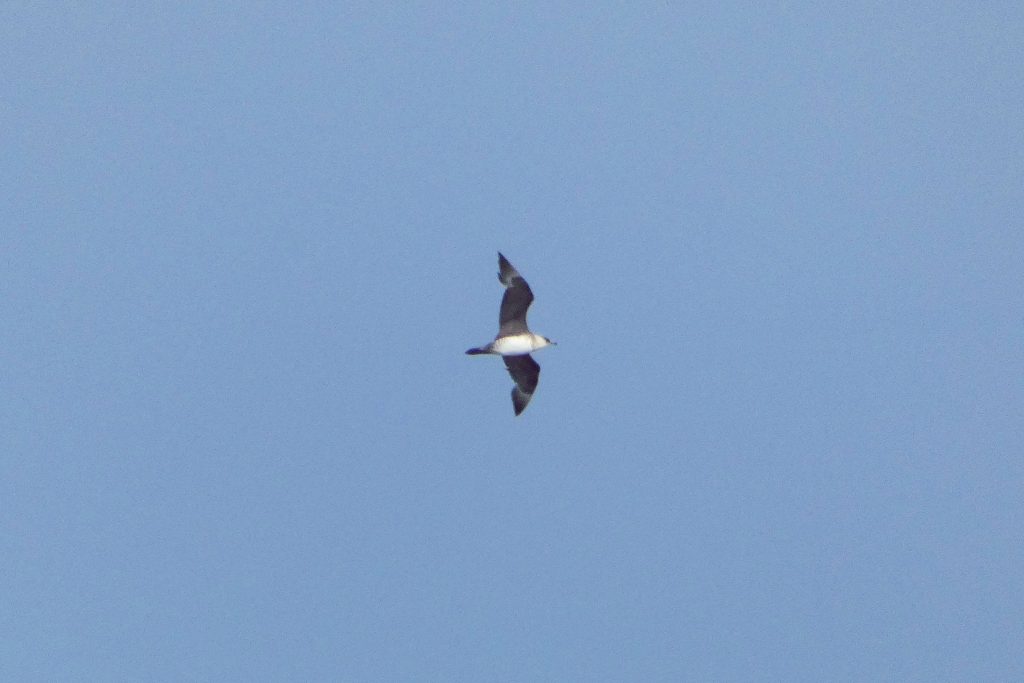
A nice look at a Parasitic Jaeger, which are typically found farther offshore. Note the pointed wings along with white wing shafts, which tend to ‘flash’ and can be seen at a distance. They also have a pale belly with a brown chest strap and a dark back. They fly quickly with powerful strokes and are extremely acrobatic when attempting to steal food from another seabird.
The passing of the front meant cooler temperatures and Northwest winds once more, which kickstarted the migration over the water again. A Greater White-fronted Goose was seen with a Canada Goose on Sunday, and Cackling Geese were found by Tom Reed on Monday and Tuesday. The ducks really started to show up on both Monday and Tuesday with Tom having over 290 Wood Duck and nearly 1100 Northern Pintail on Monday and over 560 American Black Duck on Tuesday. Both days also brought a good variety of other dabbling ducks including American Wigeon, Mallard, Gadwall, Northern Shoveler, and Green-winged and Blue-winged Teals, along with Greater and Lesser Scaups and Ring-necked Duck. It was the first good flight days for Canada Geese and Brant, and the Laughing Gull and Double-crested Cormorant numbers were in the thousands. Finally, the first Horned Grebes of the season were seen, and an American Golden Plover was found by Tom Reed.
With an exciting end to the week, we are now looking forward to the big flights of Black and Surf Scoters. Make sure to follow along with the counts in real time by visiting Trektellen.org and click on the Cape May Bird Observatory- Avalon Seawatch page.
Hope to see you out there!
Nick Giordano




